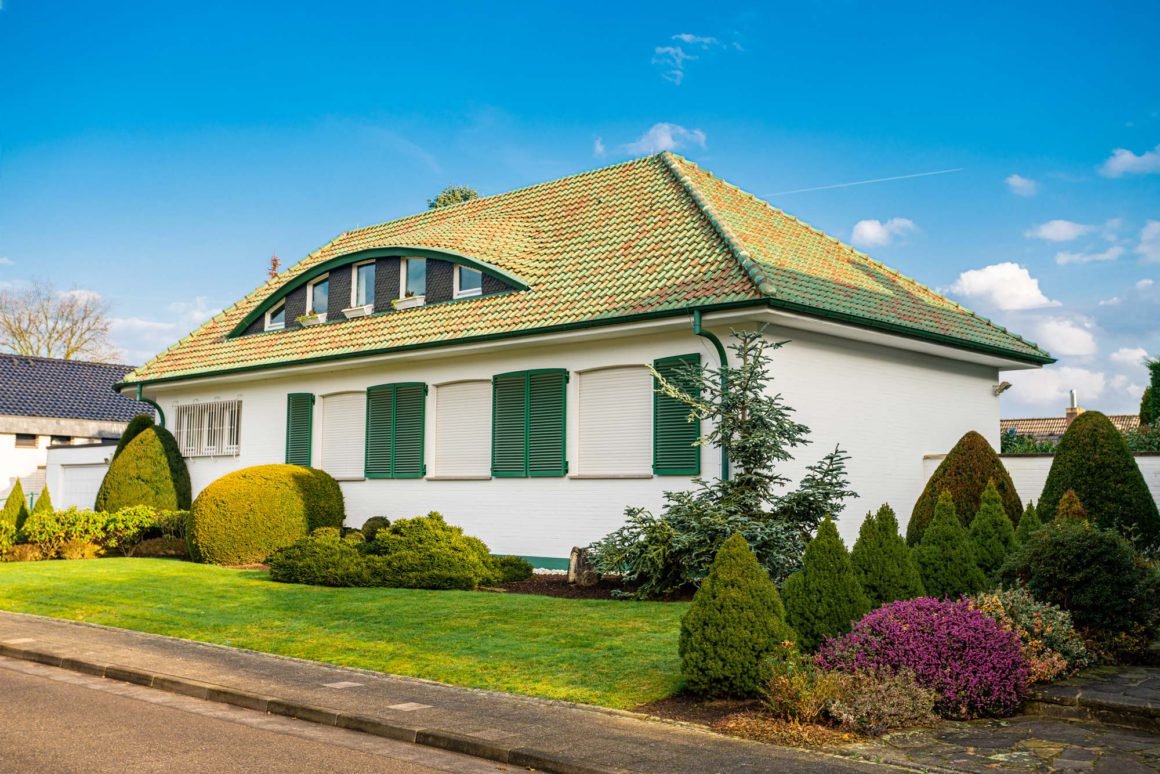When you buy a property, what part of the purchase increases in value?
It is the land of course. 
It is the question that almost every property investor I speak with understands without hesitation.
So, if land is a critical component for successful investing, why not maximise your total budget and just buy vacant land or larger allotments of land?
After all, if you get the basics right, at the end of the day a house will depreciate over time and lose value, while land will continue to grow in value.
So many questions…. here are my thoughts;
Why do we need the property?
If the land is so important, why do we even need physical property?
googletag.cmd.push(function() { googletag.display(‘div-gpt-ad-1591951428937-0’); });
As a property investor, there are important benefits that buying a block of land, with a residence on it will do for you.
Firstly, and most importantly, by renting the property out you will receive a return or an income from your investment.
Think about it … tenants won’t pay you much to live on vacant land, will they?
Lenders like to see you receiving income to support your mortgage repayments, and this will enable you to achieve a superior level of finance and you can leverage more of your own funds.
As you are receiving an income you will also have certain tax advantages that will assist you to hold the asset and close the cashflow gap.
You may not realise it, but you can’t get a tax deduction for your interest payments on vacant land
These are very important tools for investors and benefits which you would not receive by simply holding a block of land.
So, is more land better?
If land is the key, then surely more land must be the answer?
Most investors assume this to be the case and I know we occasionally hear that a house with land should always be put ahead of an apartment or townhouse.
BUT not all land is created equal.
To take it to the extreme…
 Would you prefer to buy 5,000 sqm in the middle of nowhere or a 500 sqm block in an inner to middle ring suburb of a capital city?
Would you prefer to buy 5,000 sqm in the middle of nowhere or a 500 sqm block in an inner to middle ring suburb of a capital city?
A block of land in an inner to middle ring suburb would win out, but why?
The land near a capital city would clearly be in much higher demand and have a level of scarcity.
There are more employment hubs, education, public transport, and lifestyle precincts and benefits.
Sure, the 5,000 sqm may be larger, but there is no or low demand, due to it being miles from anything.
Further…unlike the 500 sqm block of land in a built-up area, there would also be an abundance of land close by, supply is far too high.
Getting the Balance Right
If you are wondering the best way to get the right balance between house and land, here is my suggestion.
You need to understand the concept of a Land-to-Asset Ratio.
The simplest way to start is by understanding the value of the land that the property is sitting on.
 This can be reasonably easy to calculate for a house as it will be included in your rates and notices from the local council, even though these estimates are usually on the low side.
This can be reasonably easy to calculate for a house as it will be included in your rates and notices from the local council, even though these estimates are usually on the low side.
The value of the land component for units, apartments, and townhouses may be more difficult to calculate and you may have to dig a bit deeper into the rating certificates to get the value.
Finally, all you need to do is understand what you are wanting to pay for the property and work through the equation.
Let us take a closer look.
Case Studies
In the example below, we have a budget of $600,000 and are assessing two properties.
Property #1 is in an inner to middle ring suburb of a capital city, there are large employment hubs, quality schools, public transport and it has high walkability.
The house is older but still serviceable and able to be rented out to receive an income.
There are also no new estates or large parcels of land for further release and in high demand, the land value is $400,000.
Property #2 is in a secondary location or outer suburb, much further away from all the important amenities.
The house is much newer though and in good condition.
As it is much further out, this is Stage 5 of a 10-stage development with 10 years of land left to be built on.
As a result, the land is only worth $200,000 due to high supply levels and much less scarcity.

Clearly, the numbers tell the story…
Property #1, with a significantly higher Land to Asset ratio would be the standout here.
While we often see this scenario in our Brisbane office, I can hear our southern residents laughing about a $600,000 price point for a house in a superior location.
Let us go back to the concept that land will appreciate faster and work on the Land to Asset Ratio for a Villa Unit or an Apartment.
Let’s keep Property #2 the same as this will still be achievable in outer areas but now let us introduce Property 3.
Property #3 may be a Villa or Apartment in a smaller, boutique complex, in an A-Grade location, like Property One.
After looking through the details, the total site value has been noted as $3.5 million, so with 10 in the complex, the land value attributed to this apartment would be $350,000.

Once again, the land to asset ratio points to a clear standout – Property #3
Clearly, there are other important factors to consider when opting for this type of asset, but the basic principal stands.
But this won’t work for any apartment…
Can you imagine the same site with 100 apartments on site – a mere $35,000 land value.
I hear the argument here about not owning the land directly, but should someone come along to acquire the site, you would receive an equal share.
Like our Brisbane client did when a developer bought the site where they had purchased their apartment years earlier.
Appreciation vs Depreciation
At the end of the day, you want the majority of your capital to be continually appreciating or going up in value.
 A house will slowly depreciate and lose value each year and therefore a depreciation schedule can be useful in some cases.
A house will slowly depreciate and lose value each year and therefore a depreciation schedule can be useful in some cases.
But depreciation must not come at the expense of depreciation and growth.
As a rule of thumb, we would suggest a land to asset ratio of at least 50% – 60%+ as a guide, anything below that and we move on.
In Brisbane, we have managed to achieve up around 80% consistently and, in some cases, closer to 90%.
In Summary
It can be very easy to fall into “the more land the better” argument.
But the important thing to remember is that not all land is created equal.
We look for land in areas of high demand due to superior employment and lifestyle options and areas where they are not creating any more land. 
Landlocked areas where it is impossible for new stages or parcels of land to be released.
We want to find quality land with a residence that can also create an income to give us a return, finance options and tax benefits.
Getting the balance right can be tricky, but we have found an equation to use as part of our research is the Land to Asset ratio.
While not an exact science, it ensures that we get a higher portion of capital appreciating in value, as opposed to losing value via depreciation.
After all, it is depreciation that will allow you to get into your next property faster and that is the key to building long-term, sustainable wealth.
Now is the time to take action and set yourself up for the opportunities that will present themselves in property this year.

Sure the markets are moving on, but not all properties are going to increase in value. Now, more than ever, correct property selection will be critical.
You can trust the team at Metropole to provide you with direction, guidance, and results.
Whether you’re a beginner or an experienced investor, at times like we are currently experiencing you need an advisor who takes a holistic approach to your wealth creation and that’s exactly what you get from the multi-award-winning team at Metropole.
We help our clients grow, protect and pass on their wealth through a range of services including:
Strategic property advice. – Allow us to build a Strategic Property Plan for you and your family. Planning is bringing the future into the present so you can do something about it now! Click here to learn more
Buyer’s agency – As Australia’s most trusted buyers’ agents we’ve been involved in over $4Billion worth of transactions creating wealth for our clients and we can do the same for you. Our on the ground teams in Melbourne, Sydney, and Brisbane bring you years of experience and perspective – that’s something money just can’t buy. We’ll help you find your next home or an investment grade property. Click here to learn how we can help you.
Wealth Advisory – We can provide you with strategic tailored financial planning and wealth advice. Click here to learn more about we can help you.
Property Management – Our stress-free property management services help you maximise your property returns. Click here to find out why our clients enjoy a vacancy rate considerably below the market average, our tenants stay an average of 3 years, and our properties lease 10 days faster than the market average.
googletag.cmd.push(function() { googletag.display(‘div-gpt-ad-1592314976732-0’); });
Read more: propertyupdate.com.au

